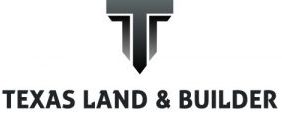The roof is one of the most critical components of any structure, providing shelter, insulation, and aesthetic appeal. Choosing the right type of roofing is a significant decision that impacts durability, cost, and functionality. This comprehensive guide explores various roofing materials, their benefits, and their drawbacks.
1. Asphalt Shingles
Benefits:
- Affordability: Asphalt shingles are one of the most cost-effective roofing options, making them popular in residential applications.
- Variety: Available in a wide range of colors and styles, they can suit nearly any architectural design.
- Ease of Installation: Simple installation lowers labor costs and time.
- Durability: Most asphalt shingles have a lifespan of 20–30 years, with premium options lasting even longer.
Drawbacks:
- Weather Vulnerability: High winds and hail can damage asphalt shingles.
- Environmental Impact: Asphalt is petroleum-based and not easily recyclable.
- Heat Absorption: In hot climates, asphalt shingles can retain heat, increasing cooling costs.

2. Metal Roofing
Benefits:
- Longevity: Metal roofs often last 40–70 years, far outpacing asphalt shingles.
- Energy Efficiency: Reflects sunlight, reducing cooling costs.
- Durability: Resistant to fire, rot, and insect damage, and can withstand severe weather.
- Sustainability: Made from recyclable materials and can often be recycled at the end of their lifespan.
Drawbacks:
- Cost: Initial installation costs are significantly higher than asphalt shingles.
- Noise: Rain and hail can be noisy on metal roofs, though insulation can mitigate this.
- Dent Vulnerability: Lower-quality metals may dent from hail or heavy debris.
3. Tile Roofing (Clay and Concrete)
Benefits:
- Aesthetic Appeal: Offers a timeless look, especially suited for Mediterranean or Spanish-style homes.
- Durability: Clay and concrete tiles can last 50–100 years.
- Fire Resistance: Non-combustible and provides excellent fire protection.
Drawbacks:
- Weight: Requires reinforced structures to support the heavy tiles.
- Cost: Expensive to install and repair.
- Fragility: While durable, tiles can crack under impact from heavy objects or improper handling.
4. Wood Shakes and Shingles
Benefits:
- Natural Beauty: Provides a rustic and natural aesthetic.
- Eco-Friendly: Made from renewable materials and can be recycled.
- Insulation: Offers excellent insulation properties.
Drawbacks:
- Maintenance: Requires regular treatment to prevent rot, mold, and insect damage.
- Fire Risk: Even treated wood has a higher fire risk than non-combustible materials.
- Shorter Lifespan: Typically lasts 20–30 years, less than other premium roofing options.
5. Slate Roofing
Benefits:
- Exceptional Longevity: Can last 75–100 years or more.
- High-End Appearance: Adds luxury and character to a home.
- Natural Material: Eco-friendly and recyclable.
Drawbacks:
- Expense: One of the most expensive roofing materials available.
- Heavy: Requires structural reinforcement, adding to overall costs.
- Limited Availability: Finding skilled installers can be challenging.
6. Synthetic Roofing (Rubber, Plastic, or Polymer Composites)
Benefits:
- Versatility: Mimics the appearance of slate, wood, or tile at a lower cost.
- Lightweight: Easier to install and doesn’t require structural reinforcement.
- Durability: Resistant to cracking, fading, and extreme weather conditions.
Drawbacks:
- Newer Technology: Limited long-term performance data compared to traditional materials.
- Cost: Higher upfront cost than asphalt shingles, though still less expensive than natural slate or tile.
7. Flat Roofing (EPDM, TPO, PVC, or Built-Up)
Benefits:
- Cost-Effective for Certain Designs: Ideal for commercial buildings or modern home styles.
- Ease of Access: Flat roofs provide easier access for maintenance or rooftop equipment installations.
- Flexible Material Options: EPDM (rubber), TPO, and PVC membranes offer versatility and energy efficiency.
Drawbacks:
- Drainage Issues: Water pooling can lead to leaks or damage without proper drainage.
- Shorter Lifespan: Typically lasts 10–30 years depending on the material.
- Aesthetic Limitations: Less visually appealing for residential structures.
8. Green Roofs
Benefits:
- Sustainability: Reduces urban heat islands, improves air quality, and provides natural insulation.
- Stormwater Management: Retains rainwater, reducing runoff.
- Aesthetic Value: Adds a natural, eco-friendly appearance to urban spaces.
Drawbacks:
- Cost: High upfront costs for installation and maintenance.
- Structural Requirements: Requires reinforced roofing systems to support the added weight.
- Maintenance: Needs regular upkeep to sustain plant life.
9. Solar Panel Roofing
Benefits:
- Energy Savings: Generates electricity, reducing energy costs.
- Tax Incentives: May qualify for federal or state rebates and credits.
- Environmental Impact: Supports renewable energy initiatives.
Drawbacks:
- Cost: Expensive installation and may require specialized maintenance.
- Weather Dependency: Performance depends on sunlight availability.
- Integration Challenges: Limited compatibility with some roof types.
10. Thatched Roofing
Benefits:
- Unique Appearance: Provides a charming, old-world aesthetic.
- Eco-Friendly: Made from natural materials like straw or reeds.
- Insulation: Offers excellent thermal and acoustic insulation.
Drawbacks:
- Fire Risk: Highly flammable unless treated with fire-retardant chemicals.
- Maintenance: Requires regular upkeep to maintain integrity.
- Limited Lifespan: Generally lasts 20–30 years.
Conclusion
The right roofing material depends on your budget, aesthetic preferences, climate, and structural requirements. While some materials prioritize durability and low maintenance, others excel in energy efficiency or unique design appeal. Whether you’re building a custom home in the Texas Hill Country or renovating an urban property, understanding the benefits and drawbacks of each roofing type can guide you to the best choice for your needs.
